A famous beauty spot near San Antonio is the La Muralla waterfall, located on private land about 40 minutes’ walk from our house. At one time or another, I believe, the owner has planned to make it accessible for tourists, but this has never worked out as economically feasible. It’s a beautiful place that stunned me the first time I went there because I had just visited the more accessible Aquiares waterfall, located in the coffee town of the same name, further down towards Turrialba, and I couldn’t believe that there was an even bigger and better one just close by my house. I still can’t find even one photograph of the place on the internet, so I’ll put a few into this post.
I have been escorted there on several occasions by don Fabio Orlando Zúñiga, local retired San Antonio shopkeeper and gardener, and now artist.
Despite the total solitude of the place, including, besides the staggering waterfall itself, thick vegetation and a lovely rocky river, I had never had much luck with the birds there, until this week that is.
For yesterday’s ramble, I was accompanied by a visiting American from Ohio, Mark Magree. The hike takes you up and down some fairly steep hills, mostly through dairy country. It passes by the very pretty house and garden of don Edgar, whose wife is responsible for the amazing array of flowers. Don Edgar rides out most mornings on his white horse, often wrapped in a cape because of the mist and rain, and comes down from La Cinchona to the village here. His son, Asdrúbal, and daughter-in-law, Adriana, live next door to us and are wonderful neighbours. You can find them in the outdoor market in Turrialba any Friday or Saturday selling the famous Turrialba cheese. They produce it at their finca higher up on the volcano. Don Asdrúbal took me up there for a day. Its right next to where the cloud forest begins; you duck into the forest and the magical sound of the Black-faced solitaire (Myadestes melanops) is heard almost immediately.
Anyway, our hike this day took us up to La Cinchona and then down to the waterfall, back out again (steep uphill, but fortunately no sunshine) and then in a detour up to Guayabo (careful, there are two Guayabos; this one is Guayabo Arriba, or Guayabo de Santa Cruz), and back around and down again to San Antonio. It’s not hugely strenuous, but we were both thankful to cap the day eating trout at Las Truchas, just up the hill here in San Antonio.
I’m very familiar with the walk, most of it on unimproved dirt roads, and I expected the usual bird species. There are usually no surprises, and there’s not a lot of forested land until you get near the waterfall. I always take binoculars, but I left the camera to Mark and I’m hoping he’ll come through with some nice pictures from the day.
Birds you can’t miss are the Cattle egrets, Rufous-collared sparrows, Yellow-faced grassquits, Great-tailed grackles (of course and unfortunately), Blue-grey tanagers, Passerini’s tanagers with the male’s beautiful red rump,
chayoteras (Black-headed saltators), Tropical kingbirds, Kiskadees and Social flycatchers, Montezuma oropendolas and the national bird of Costa Rica, the yigüirro (Clay-coloured robin).
Today, however, just after don Edgar’s house, the large Tyrant flycatcher sitting on the top of a small tree wasn’t the usual Tyrannus melancholicus but the Miodynastes luteiventris, Sulphur-bellied flycatcher. Maybe that’s no big deal in a lot of places, but it’s only my third sighting here in two years. Unfortunately, it buggered off before Mark could get a photo, but I’m pretty sure a second one flew with it. Here’s a great photo of that species taken by good friend Karel Straatman at another location in Costa Rica.
The walk down to the waterfall was a thrill as always, with its stupendous views and hugely majestic trees. This time, down by the Guayabo river, rushing from the falls down towards the nearby Guayabo National Monument the Black phoebes had competition from at least two pretty pairs of Torrent tyrannulets (Serpophaga cinerea). The cinerea gets the colour scheme just about right, and please notice my increasing fluency in Latin.
We went right to the foot of the waterfall and got completely soaked, of course, but it’s a beautiful experience. It’s too wild a place to attempt a swim beneath the falls because of the sheer force of the water, but there are quieter pools further down the river. A clear gushing spring sprouts from the hillside and crosses the meadow at the foot of the falls, affording a much-needed drink on a hot day. At this point, if you’re with don Fabio, he pulls out chunks of cajeta of various flavours. Cajeta is a local sweet delicacy, similar to Mexico’s leche quemada but offered in many varieties.
You can’t hear the birds because of the thunder of the falls, and so I was not surprised that we found no other species other than the Bay wren, whose powerful voice, even from such a small bird, rises above the din of the pounding water.
Back up on top, after a grueling climb, we paused before the first houses of the dairy community of La Cinchona and were rewarded with a flurry of activity in the nearby trees. Our first warblers of the day were here. They seem to be much fewer in recent weeks, but the two commonest species, the Tennessee warbler and the Chestnut-sided were now in evidence. With them, however, in the same tree, were a male Scarlet-thighed dacnis (Dacnis venusta) and a male Bay-headed tanager (Tangara gyrola).
The dacnis has to be separated from the Blue dacnis (Dacnis cayana), which I have never seen and is supposed to be a little lower down but a bit hard to find. Don Fabio immediately calls the venusta “calzón rojo” because of the pretty red leggings it wears high up near the body. This is the nearest point to my house that I have seen this bird to date. The same is true of the Bay-headed tanager, which was a lifer for me not so long ago at Refugio La Marta. To round things off, a Roadside hawk (Buteo magnirostris) made a brief appearance, but we failed to get the expected woodpeckers and meadowlarks as we passed back through La Cinchona.
The roundabout route home took us mostly uphill, unfortunately, but how sweet it was to arrive finally at Las Truchas for a cold beer and a whacking great big trout draped across the dinner plate. For the equivalent of about $7 you get a huge meal and several drinks. Mark and I had not a cent between us, but happily my credit was good with the new owners. Las Truchas is a great place that I highly recommend despite the difficulty of getting up the slope which requires a four-wheel drive vehicle for the last bit. It’s located at the junction of the dirt road down to San Antonio with the Santa Cruz-Guayabo main road (also dirt but in good condition). You can get your trout either whole or filleted, and you can fish it out yourself if you prefer. They have a series of cascading ponds on a steep hillside with lots of interesting and beautiful plants next to a rocky little stream. Bring a light sweater in the evening, because it can be wet and chilly. The new owners, a young family, live on site, and they cater almost exclusively to locals. Tourists would simply have difficulty finding it, although it is signposted (Bar Las Truchas) at El Cruce, where the San Antonio main road (paved, euphemistically speaking) leaves the Turrialba-Pacayas-Cartago highway. The word ‘highway’ is sheer hyperbole.



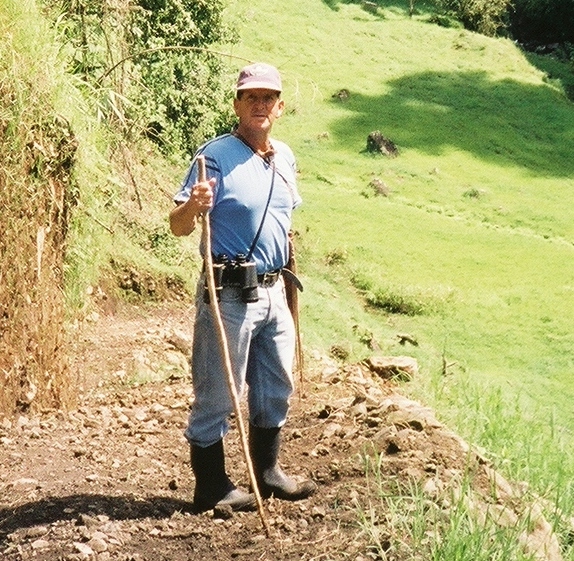



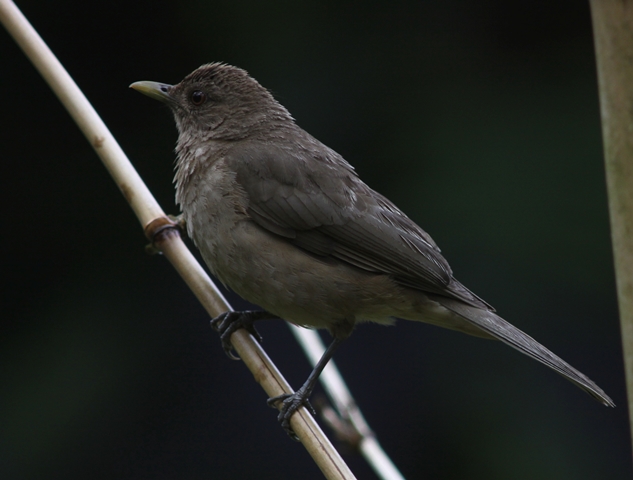
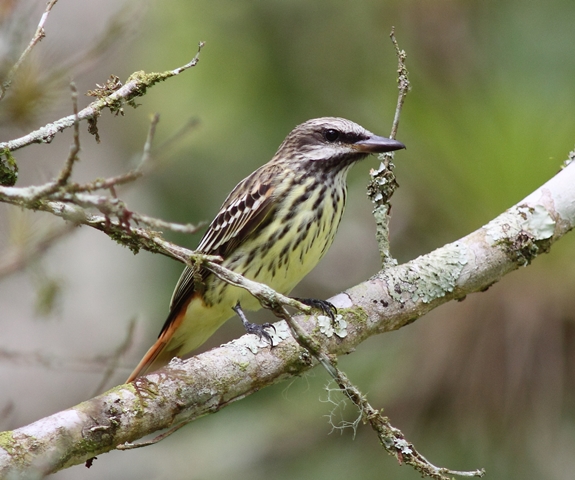
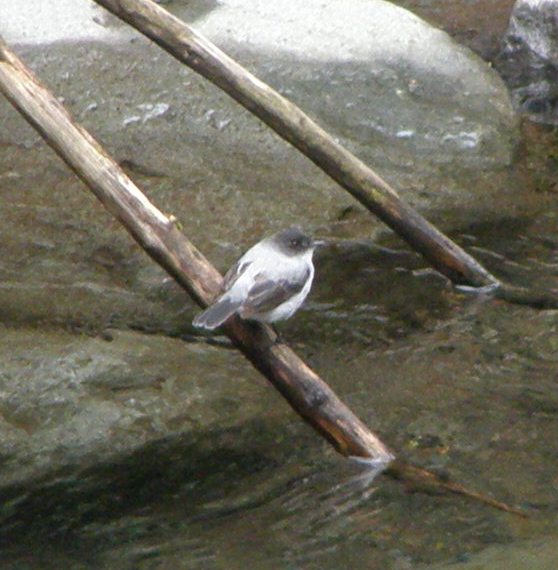


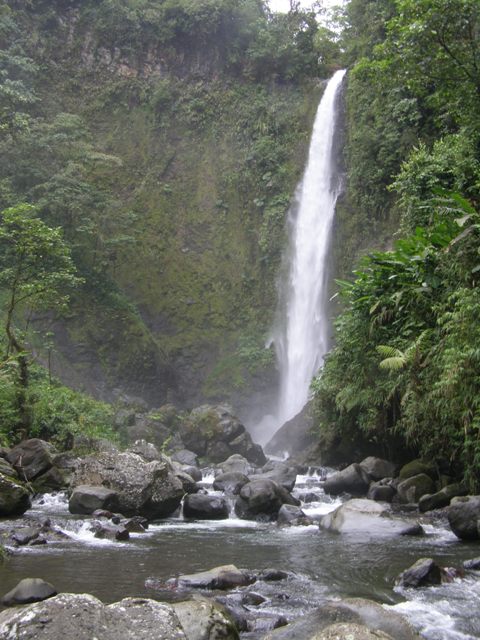
Hi, Paul – La Muralla sounds like a beautiful place. We’ve looked in many places for Torrent Tyrannulets (common names only for now. I’m trying to learn Spanish so one language at a time is all I can handle!) but have yet to see one.
I’m still enjoying your blogs. I think Liz and I will have to pay you a visit when we get back to Costa Rica. For May, we are going to Panama for the first time. Mostly the canal area but also a few days in El Valle.
Steve
LikeLike
Hi Steve,
Nice to hear from you again. We certainly hope to see you in Costa Rica in the near future.
Paul
LikeLike
Estoy interesado en visitar este lugar, me podrían dar alguna información de costos, como llegar o cualquier otra información que me pueda servir? se los agradeceré. mi correo es PMOLINA@BNCR.FI.CR
LikeLike
Hola Pedro,
Ojalá haya recibido mi mensaje por e-mail, en el cual le expliqué cómo llegar a esta hermosa cascada.
LikeLike
Hola Paul, precioso lugar. Como llegar? Quiero ir con mi familia. Soy de Turrialba. No sabia de este lugar. Sus fotos son preciosas. Gracias.
LikeLike
Hola Manuelita, le he mandado las direcciones por e-mail.
LikeLike
Hi Paul! I know this is an old post, but I would love to visit this wonderful place. By any chance could you please provide me with the directions to get there? Best regards!
LikeLike
Hi Paul! I know it’s an old post, but I would love to visit this wonderful place. By any chance could you still please provide me with the directions of how getting there? Best regards! My email is digiimportscr@gmail.com
LikeLike
Hi Roger, I hope I dealt with this by email! See you here sometime perhaps!
LikeLike
Hola! me encantaría visitar este lugar, podría enviarme la información para saber como llegar y los costos. Gracias
LikeLike
Hola Gloria, perdone el retraso y llámeme al 2 556 56 51 para información detallada.
LikeLike
Buenas, Me gustaría saber cómo llegar hasta la catarata. Si me pueden brindar información se los agradecería. Muchas gracias.
LikeLike
Andrés, ya le mandé la información en un email junto con mi teléfono.
LikeLike
Paul, could you give me some details about getting here? My email is danw@uga.edu? I saw guides offering tours but was wondering if you really need one if you know where to go.
Thanks!
Dan
LikeLike
Dan, I emailed a reply to you directly.
LikeLike